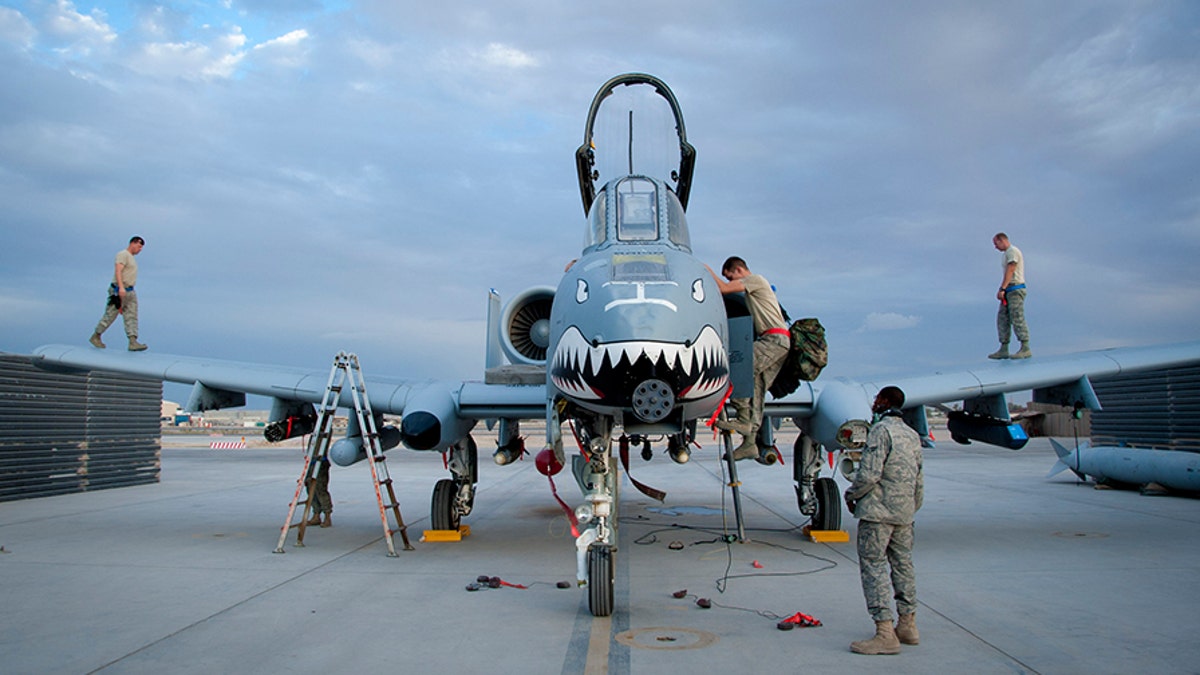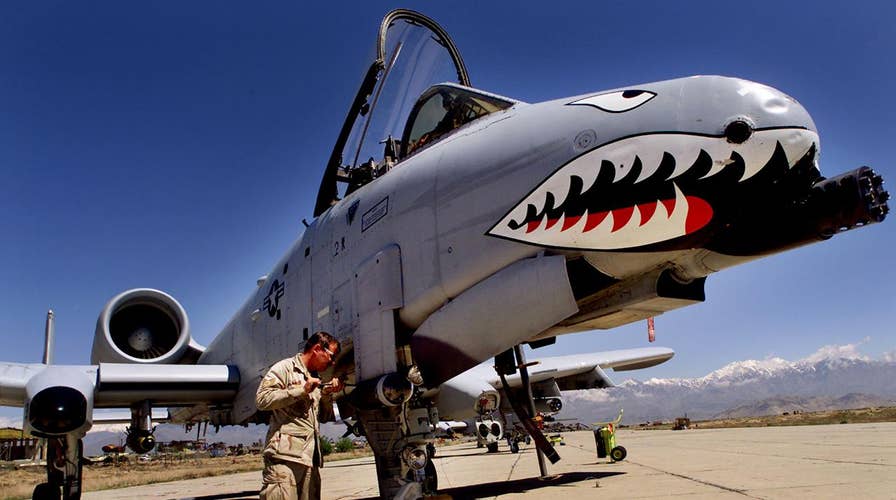Air Force deploys A-10 ground attack aircraft to Afghanistan
The 12 A-10s were originally headed for an airbase in Turkey to fight ISIS, but with the air war largely over in Iraq and Syria, military brass decided the jets and more drones were needed at Kandahar Airfield in Afghanistan to ramp up the fight against the Taliban.
The U.S. Air Force has deployed A-10 Thunderbolt jets to Afghanistan for the first time in more than three years to provide close-air support for American and Afghan troops — the latest sign of escalating military operations and deepening U.S. military involvement by the Trump administration against the Taliban, more than 16 years after the 9/11 attacks.
“As we’ve applied increased pressure on the Taliban and their revenue sources with precision airpower, we’ve gained considerable momentum in our effort to force them to reconcile or face defeat,” said Lt. Gen. Jeffrey Harrigian, head of U.S. Air Forces Central Command, in a statement to Fox News. “As U.S. advisors move closer to the front lines in support of our Afghan partners, this additional airpower will give them the decisive advantage necessary to advance with confidence.”
The newly arrived A-10s flew their first combat missions in Afghanistan less than 24 hours after arriving at Kandahar Airfield on Friday, January 19. The jets are from the 303d Expeditionary Fighter Squadron from Whiteman Air Force Base, Missouri.
In addition to the A-10s, Air Force Central Command has sent more MQ-9 Reaper drones, and HH-60G helicopters used by Air Force special operations forces for combat search and rescue. The additional jets and helicopters will report to the 455th Air Expeditionary Wing at Bagram Airfield, located an hour north of Kabul.
The Air Force is sending 12 A-10 jets to Kandahar Airfield. The Air Force Reserve unit was previously scheduled to replace the A-10s operating out of Incirlik Air Base, Turkey, to take part in the ISIS fight in Iraq and Syria — but with the terrorist group having lost 98 percent of the territory it once controlled due to in part a relentless air campaign, top military brass decided the jets were needed in Afghanistan to support Afghan and American troops on the ground.

Members of the 451st Expeditionary Maintenance Group perform a recovery on an A-10 Warthog at Kandahar Airfield, Afghanistan, Sept. 2, 2011. (.S. Air Force photo by Senior Airman Corey Hook)
The U.S. Air Force says more than 4,300 bombs were dropped last year in Afghanistan, far fewer than the nearly 40,000 dropped against ISIS in Iraq and Syria over the same period.
This fall, 3,000 additional U.S. troops arrived in Afghanistan. By April, the U.S. Army is planning to send up to 1,000 more from Fort Benning, Ga. — the first soldiers from the U.S. Army’s Security Force Assistance Brigade, a unit made up of experienced officers and enlisted soldiers to advise Afghan troops closer to the front lines. The additional troops will bring the U.S. total to roughly 15,000. There were roughly 8,400 U.S. troops on the ground in Afghanistan when President Trump took office.
The U.S. military dropped more bombs in Afghanistan in 2017, than in 2012 when the U.S. military had nearly 100,000 troops on the ground, according to the Air Force.
The spike in airstrikes began after Trump took office last year.
As the war against ISIS winds down in Iraq and Syria, more Air Force jets and drones are being sent to Afghanistan.
The new jets arrive at a time when both the Taliban and an ISIS-affiliate have stepped up their attacks on Afghanistan’s capital.
The Taliban claimed responsibility for an attack lasting more than 13 hours at Kabul’s Intercontinental Hotel by six gunmen, killing an estimated 18 civilians, mostly foreigners, according to local media reports. A significant number of the air strikes in Afghanistan last year targeted an ISIS-affiliate, responsible for other attacks inside Kabul at the end of the year, killing more than 100 civilians.
Senior military leaders want to attack the Taliban using the same tactics used successfully against ISIS in Iraq and Syria — destroy major revenue sources to dry up funding which supports the organization.

An U.S. Air Force A-10 Warthog takes off on a mission at dawn from Bagram Air Field, Afghanistan, Feb. 11, 2014. (U.S. Air Force photo by Senior Master Sgt. Gary J. Rihn)
The top American commander in Afghanistan, Army Gen. John W. Nicholson Jr., wants to go after the Taliban’s poppy crops used to make heroin, in much the same way the U.S. relentlessly attacked a major funding source for ISIS — oil.
“This is allowed under the authorities that I was granted under the new U.S. strategy,” Nicholson told reporters late last year. “I could not do that previously.”
“(Afghanistan) President (Ashraf) Ghani said, he believes we have turned the corner and I agree,” Nicholson added.

A-10s arriving at Kandahar Airfield in Afghanistan Jan 19. (U.S. Air Force)
Air Force Brig. Gen. Lance Bunch said in December that U.S. airstrikes destroyed 25 narcotics-processing labs worth $80 million from the Taliban inventory in Helmand Province, not far from neighboring Kandahar Province in southern Afghanistan, where the new A-10s will be based.
The A-10 dates back to the mid-70s, a jet made famous for its 30mm Gatling gun, which can fire 3,900 rounds a minute, the preferred air asset by U.S. ground troops for decades — to take out enemy forces at close range. The “Warthog,” as the jet is known, was designed to loiter above the battlefield at low altitudes protected by reinforced armor around the cockpit with a bulletproof-glass canopy.
The newest A-10 was built in 1984, however. Because of its age, the jet has been a target for Air Force cuts in recent years as budgets tightened. But the jet maintains strong support on Capitol Hill, and has continued to be requested on the frontlines. A squadron of 12 A-10s deployed to Turkey in 2015 to strike ISIS.
Air Force Secretary Heather Wilson told the Senate Armed Services Committee in December that she supported keeping the aging jets until the mid-2020s.
“I happen to be a fan of the A-10,” she said.

